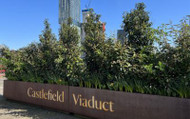Posted by Amber Williams on 5th Apr 2023
Castlefield Viaduct – Manchester’s Newest Sky Garden
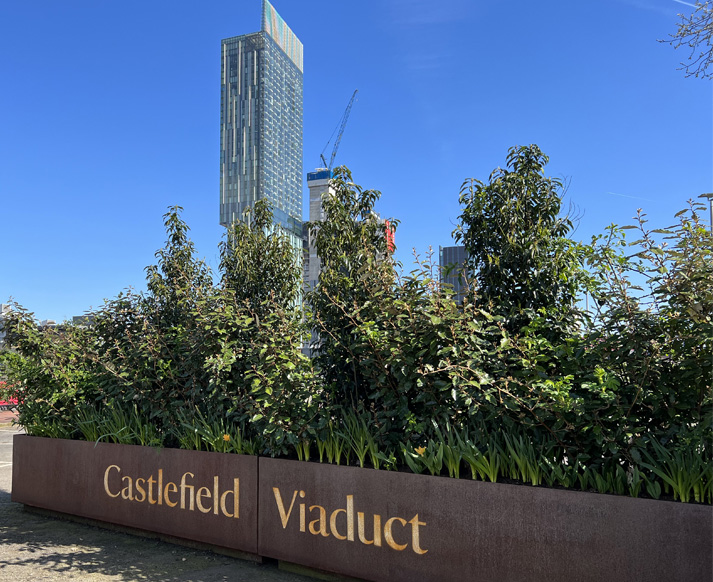
The Manchester community triumphs once again with the city’s newest green space. Elevated above Castlefield hides a brand-new garden to explore, providing the local area with a new lease of life.
Dubbed ‘The Sky Garden’, the rejuvenated outdoor space that was once an industrial relic has since been turned into an urban haven for the public. Thanks to the folks at the National Trust, the history-filled Castlefield feels fully enriched with blasts from the past, but with a colourful twist!
The History of the Viaduct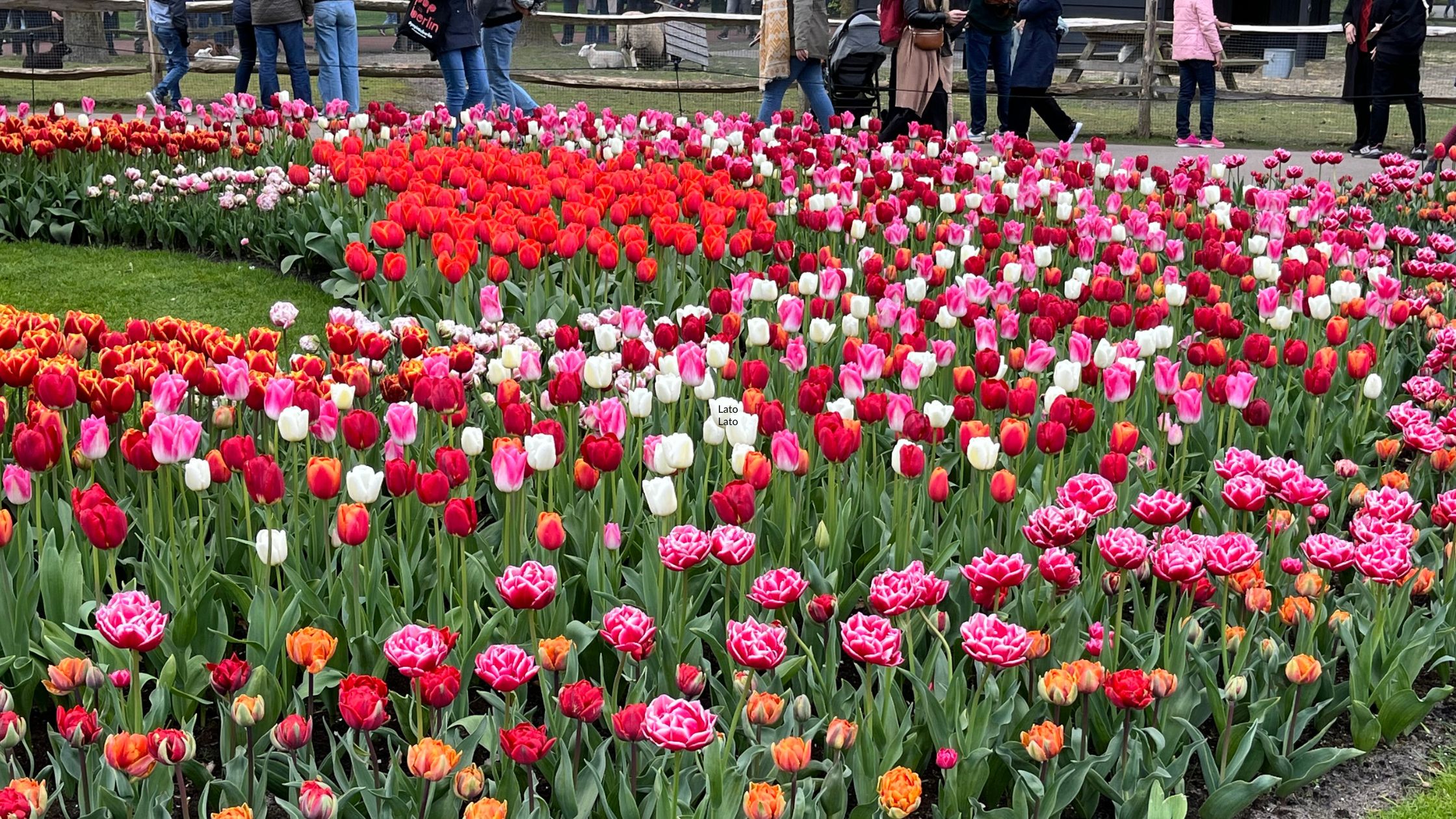
Image: Castlefield & Bridgewater Canal. Source: The National Trust.
Built in 1892 by the same engineers that built the Blackpool tower, Castlefield's viaduct has stood ever since. Back in its heyday, it was used as a connection between the rest of the UK and Manchester, providing goods to the city. In fact, Manchester was the world’s first industrialised city, providing countries across the globe with cotton (which is why Manchester is also known as Cottonopolis). The whole of Britain was responsible for 80 per cent of cotton and fabric production, and Manchester was at the centre of it all.
Castlefield is the oldest part of the city. It was where the Romans settled in 79AD, building a fortress that can still be seen in parts to this day. For 77 years, the viaduct was heavily used for rail travel in and out of Manchester until it closed in 1969.
For over 50 years, the viaduct has been left to its own devices and became the inspiration for the garden that sits there today. With plants like birch, cotoneaster, and even wild strawberries running wild across the relic train lines, this piece of history has been contained and untouched – something the National Trust wanted to highlight in their design.
Why This Garden Is Helping Combat Climate Change
Image: A quote from one of the National Trust founders and view from mid-way through the gardens.
Green spaces at the doorstep of city-dwellers are something that Manchester lacked – until recently. With new parks and gardens like Castlefield Viaduct appearing in just the last year, they’re allowing residents and tourists a place to unwind and enjoy urban greenery.
By 1913, most plants and trees had died – destroyed by the thick layer of soot that covered the city. However, as factories closed and air pollution levels started to decrease, plants could finally find a place to thrive.
Green spaces in urban landscapes are proven to positively impact air quality, provide wildlife with sustenance, and even prevent flooding. The benefits of filling cities with as many green spaces as possible are immeasurable, and we’re glad to see Manchester take matters into its own hands.
Why You Should Visit Castlefield Viaduct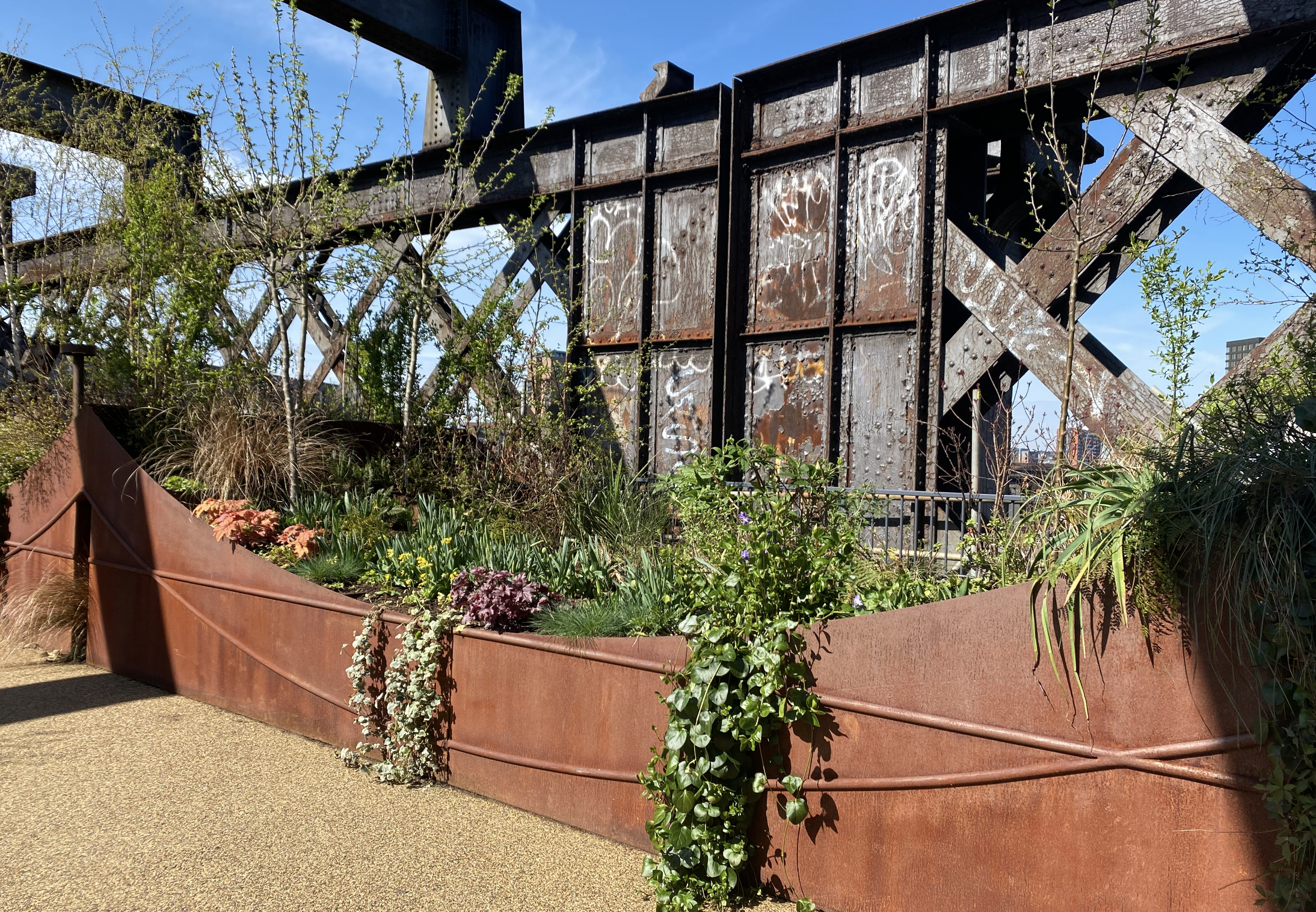
Image: Just one of the many planters at Castlefield Viaduct.
Castlefield Viaduct, for the moment, is a year-long 'test and learn’ pilot. This is to evaluate their impact on the environment and to assess how environmentally friendly and sustainable this garden can truly be.
Now that spring is almost here – the viaduct garden is almost in full bloom! Our team took a short trip from our headquarters to the garden to show you everything you should look out for if you decide to pay a visit.
Tickets can be booked online for a guaranteed timeslot. However, the gardens are free for entry to the public from 1.30pm. At the entrance, there are two public bathrooms, and a waiting space with ample seating if you do need to wait before entering the gardens.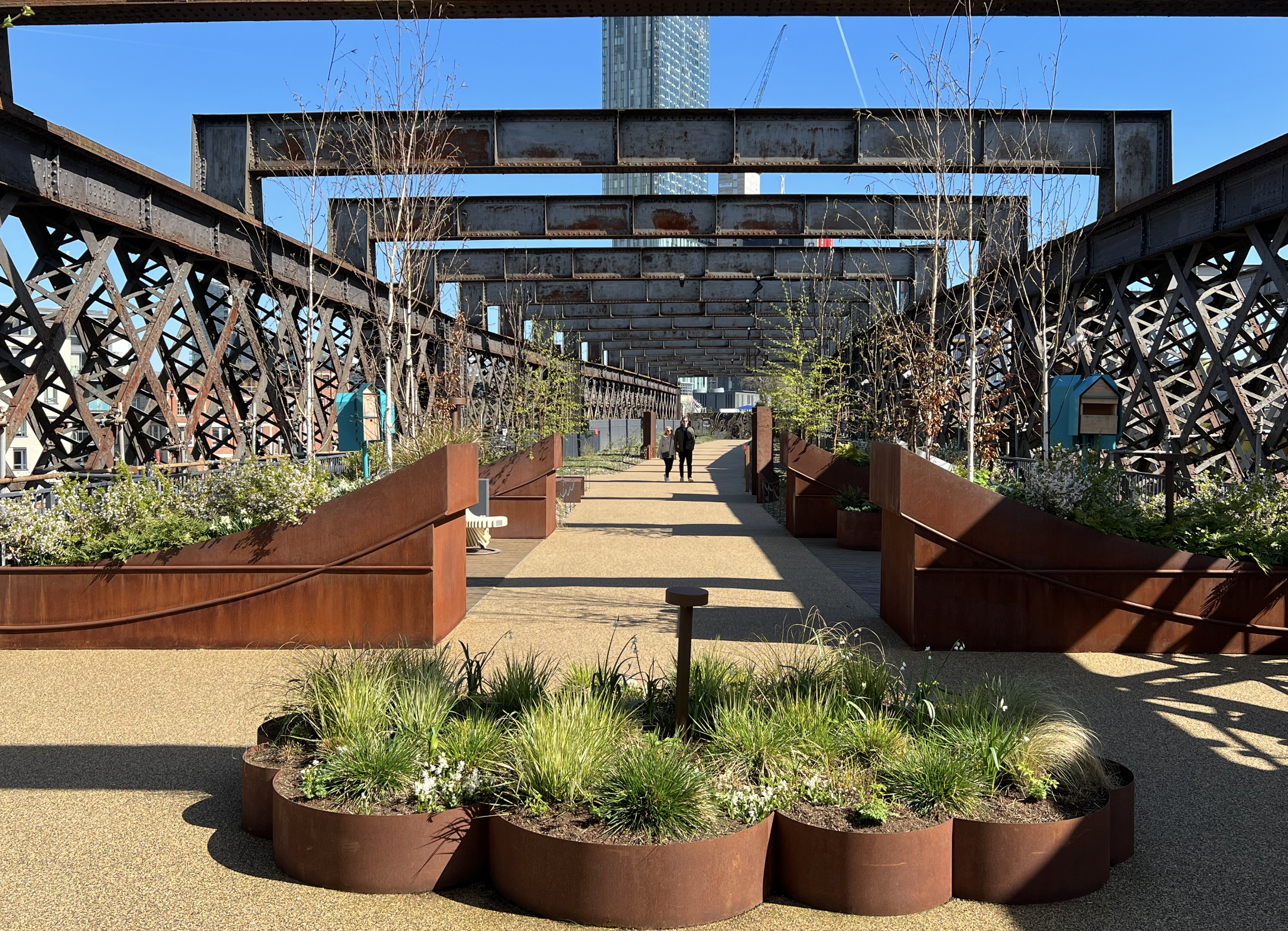
Image: The view from the mid-garden towards the front of the garden.
When you’re let through after a quick safety and informational talk, you’ll see what’s known as the ‘Naked Viaduct’. This area has been left as a nod to its natural state, which you can also see at the end of the garden.
The gardens themselves are full of life and a natural buzz. It’s a gorgeous place for people to come and soak in the city's soundscape in a calming environment. Seasonal plants, trees, and blooms can be seen on both sides of the strip, which are mostly all sign-posted in case you’d like to recreate the look at home!
Further down the garden, there is a pond with seating, allowing you to watch on as wildlife does what it does best. At the end of the garden, tiered sculptures are filled with plants and annual blooms, giving it an extra boost of colour and interest.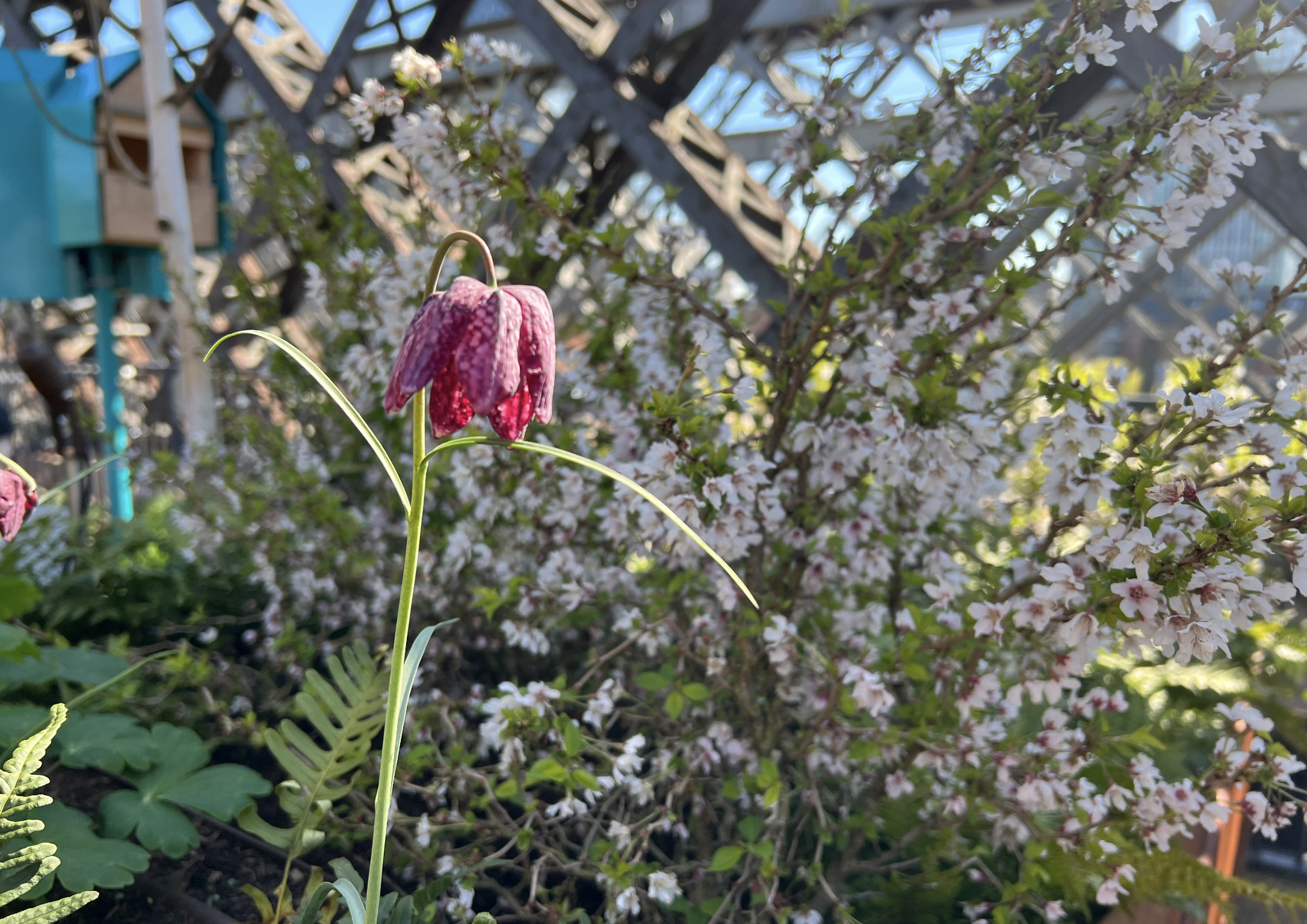
Image: A fritillaria among a sea of beautiful blossoms.
The gardens have a knack for sustainability, which can be seen throughout the garden. For example, there are several birdhouses dotted about which you can see as you walk around, as well as nature hotels for animals like hedgehogs. There are also several large water Butts which collect rainwater to feed the plants. A small room at the far end of the garden provides you with a gorgeous view of the viaduct on the other side, with all its natural beauty – truly a sight to behold, especially once it’s in full bloom throughout summer and into autumn.
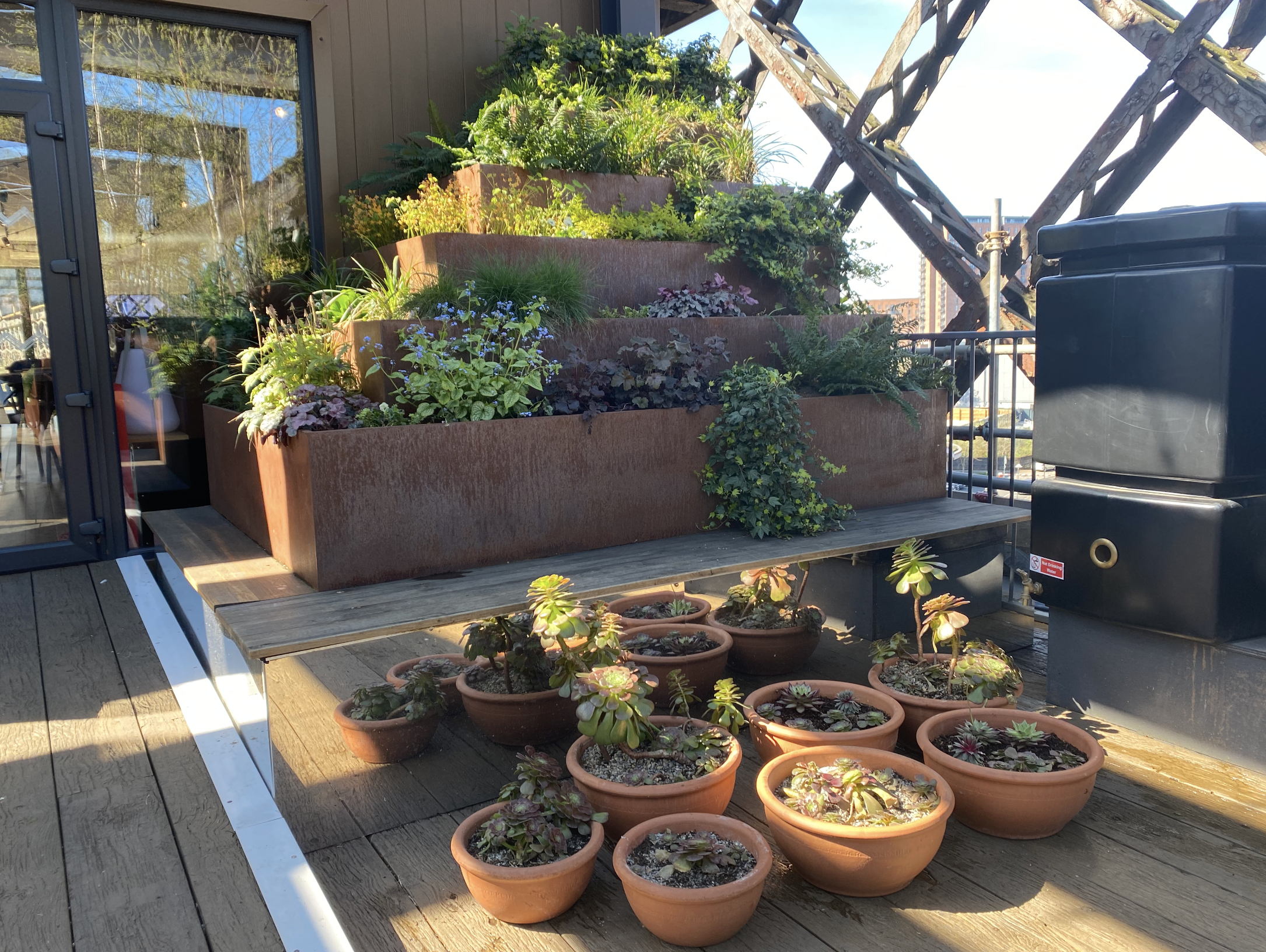
Image: A tiered planter full of life, plus one of the many water butts to the right.
Overall, the Castlefield Viaduct is a gorgeous place to explore on your next visit to Manchester. We visited on a lovely spring day, and the weather plus the unusual blue skies (for Manchester, anyway!) accentuated the vibe that the garden aims for. It’s certainly a great choice for family members of any age, especially over this half-term.

